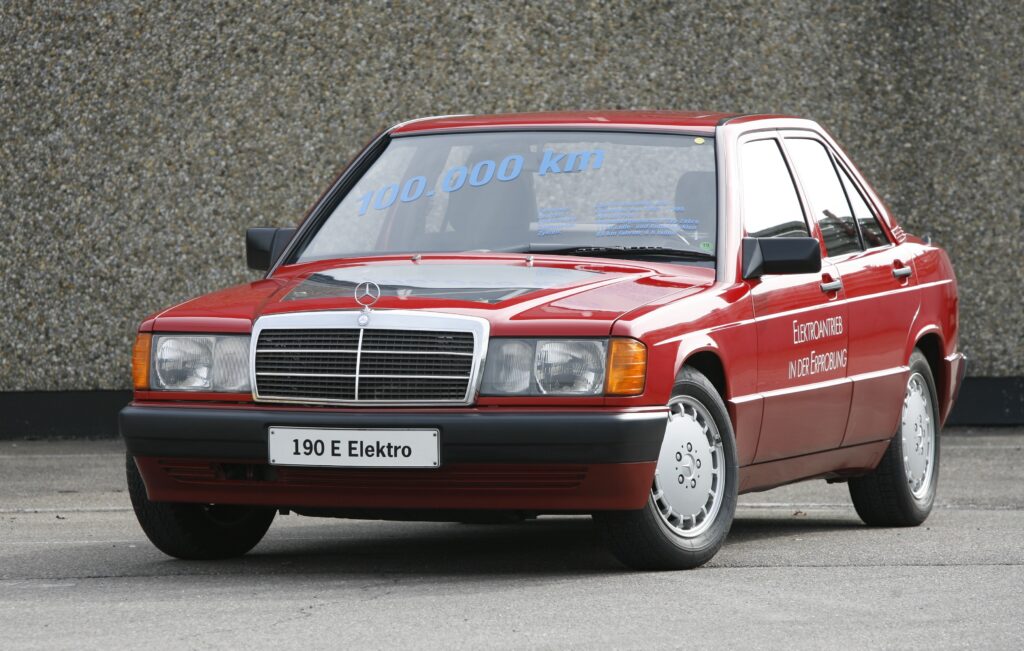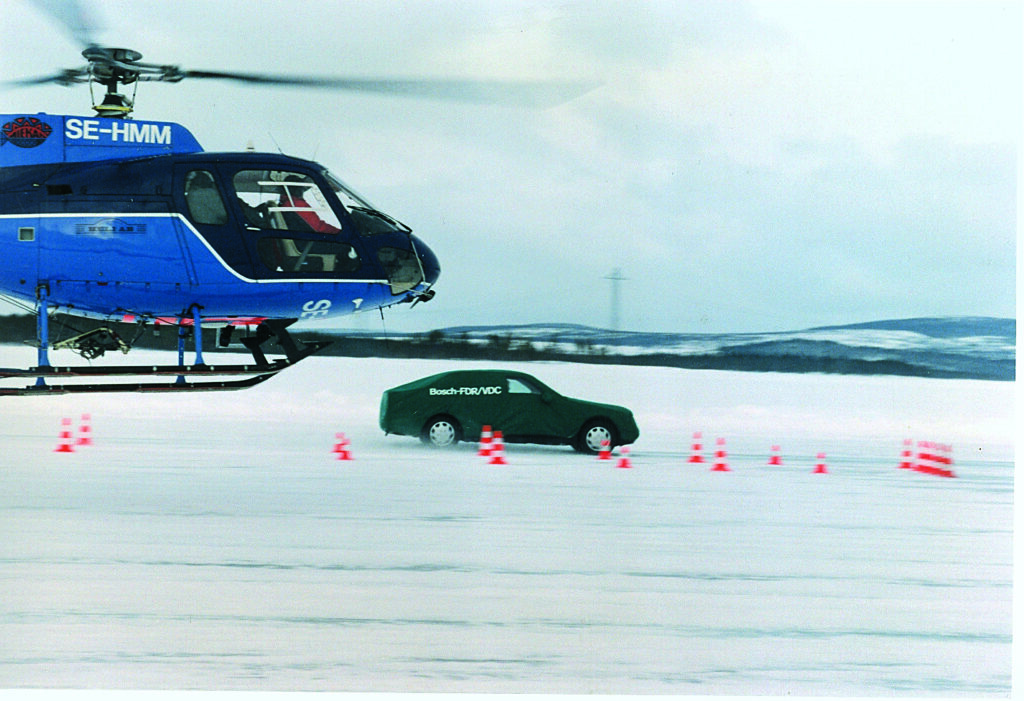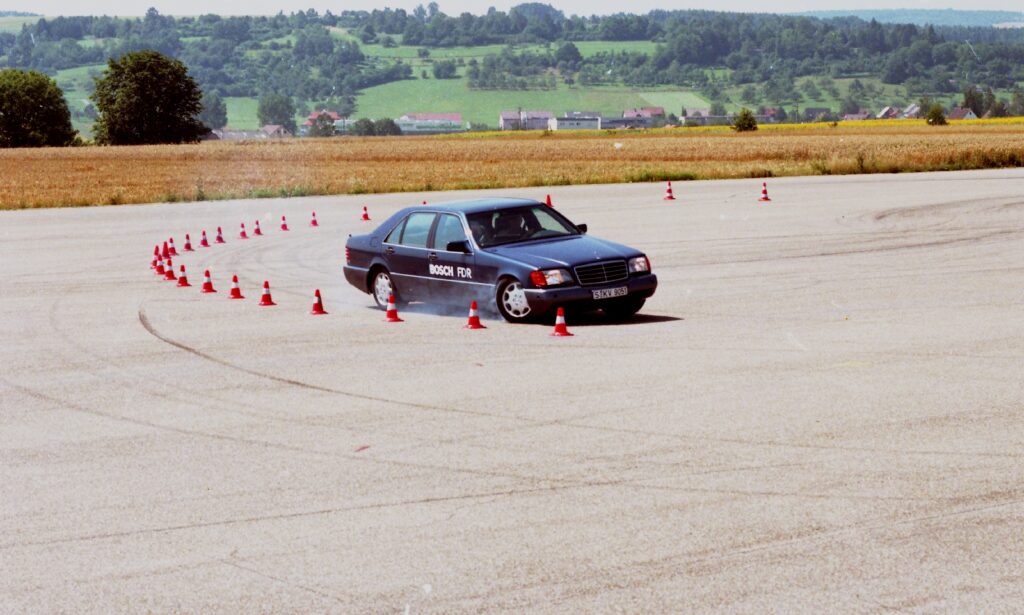From the archives: Mercedes W201 EV
- PostedPublished 17 July 2020

The W201-generation Mercedes-Benz 190 has long been a much-admired model in the German brand’s extensive history. Its sharp styling, innovative features and indomitable build quality garnered it myriad fans and, by the time production ended in 1993, almost 1.9 million had been sold.
It would be succeeded by several generations of C-Class, which built upon the template established by the now-fabled 190.
Surprisingly, the aged saloon has also contributed to the development of a very different and far more modern Mercedes-Benz – namely the all-electric EQC.
Back in 1990, Mercedes-Benz unveiled a prototype of a 190 that had been converted to electric drive to test a variety of powertrain and battery configurations.
The company had experience with alternative drive systems, but increasing environmental concerns led it to seriously consider a zero-emissions approach.

Subsequently, in March 1991, a more advanced electric 190 was revealed.
Each rear wheel was powered by a 16kW motor, while a sodium-nickel chloride battery granted a range of some 110km. Regenerative braking was also standard and Mercedes claimed a weight penalty of just 200kg compared to a standard car.
Ten electric 190s ultimately took part in large-scale trials, in which one car racked up 100,000km in a single year. The tests ran for six years, too, granting significant insight into the real-world battery degradation, usage cycles and reliability.
Unfortunately, issues such as cost, range and a lack of charging infrastructure meant that series production wasn’t viable.
Decades later, however, and that comprehensive pool of knowledge is now proving useful in the development of today’s electric vehicles.
25 years of Bosch Electronic Stability Program

When Mercedes-Benz updated the W140 S-Class in 1995, it featured an innovation that would dramatically change the face of automotive safety – the electronic stability program (ESP).
The pioneering system, co-developed with Bosch, was designed to prevent uncontrolled skidding by independently applying a vehicle’s brakes to help steer and stabilise it.
At the heart of the system, which can trace its roots back to the mid-1950s, is a yaw sensor that measures the vehicle movement compared with the driver’s inputs.

If deviation is detected, the brakes are applied as required – and the system can also reduce engine output to help reinstate control.
Now, as ESP celebrates its 25th anniversary, Bosch estimates that more than 15,000 lives have been saved by ESP in the European Union alone.
More than 250 million ESP systems have also been produced by the company – and more than 82 per cent of new cars are now fitted with the life-saving system.

- CategoriesIn SightGlass
- TagsBosch, mercedes-benz, SightGlass News Issue 20

